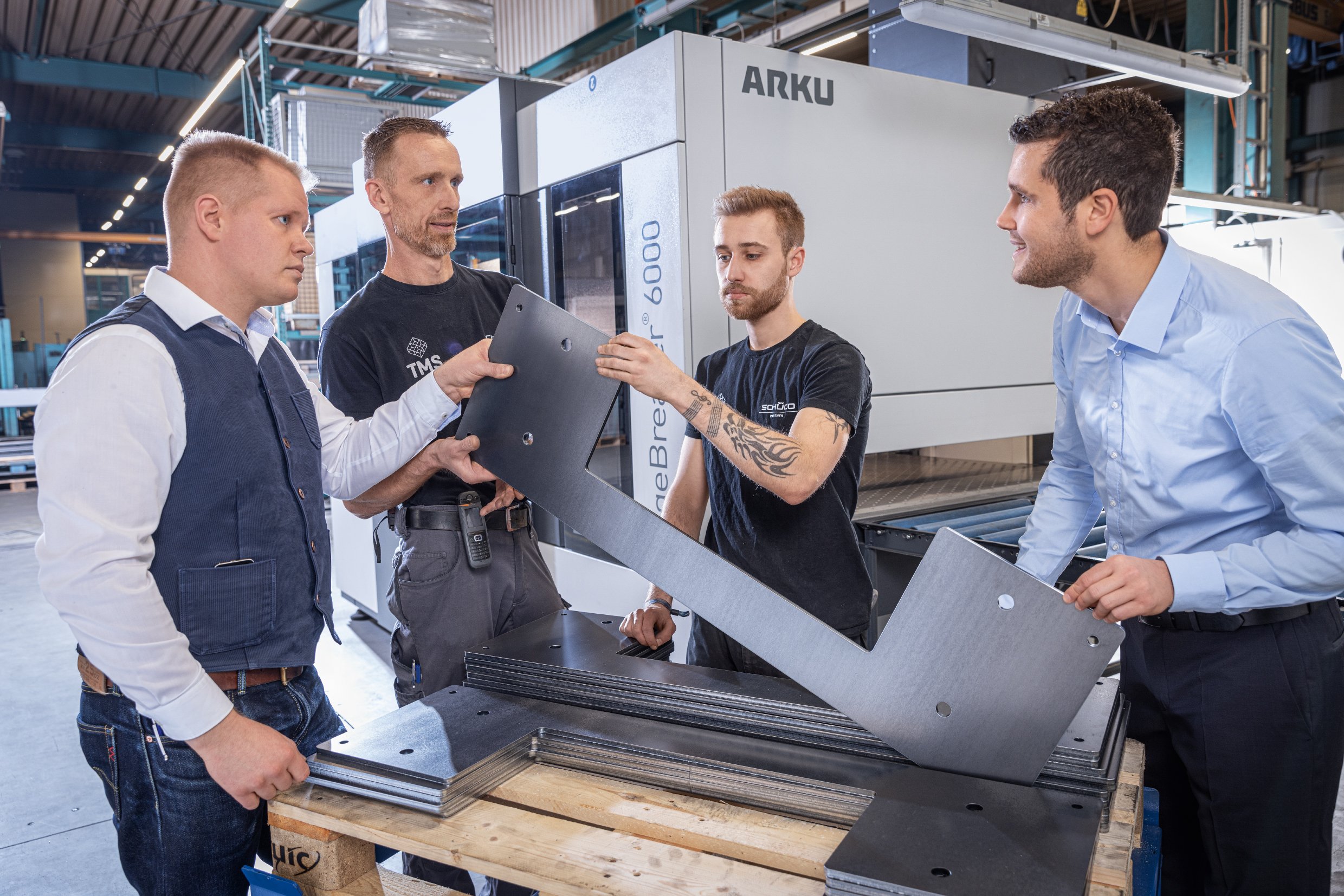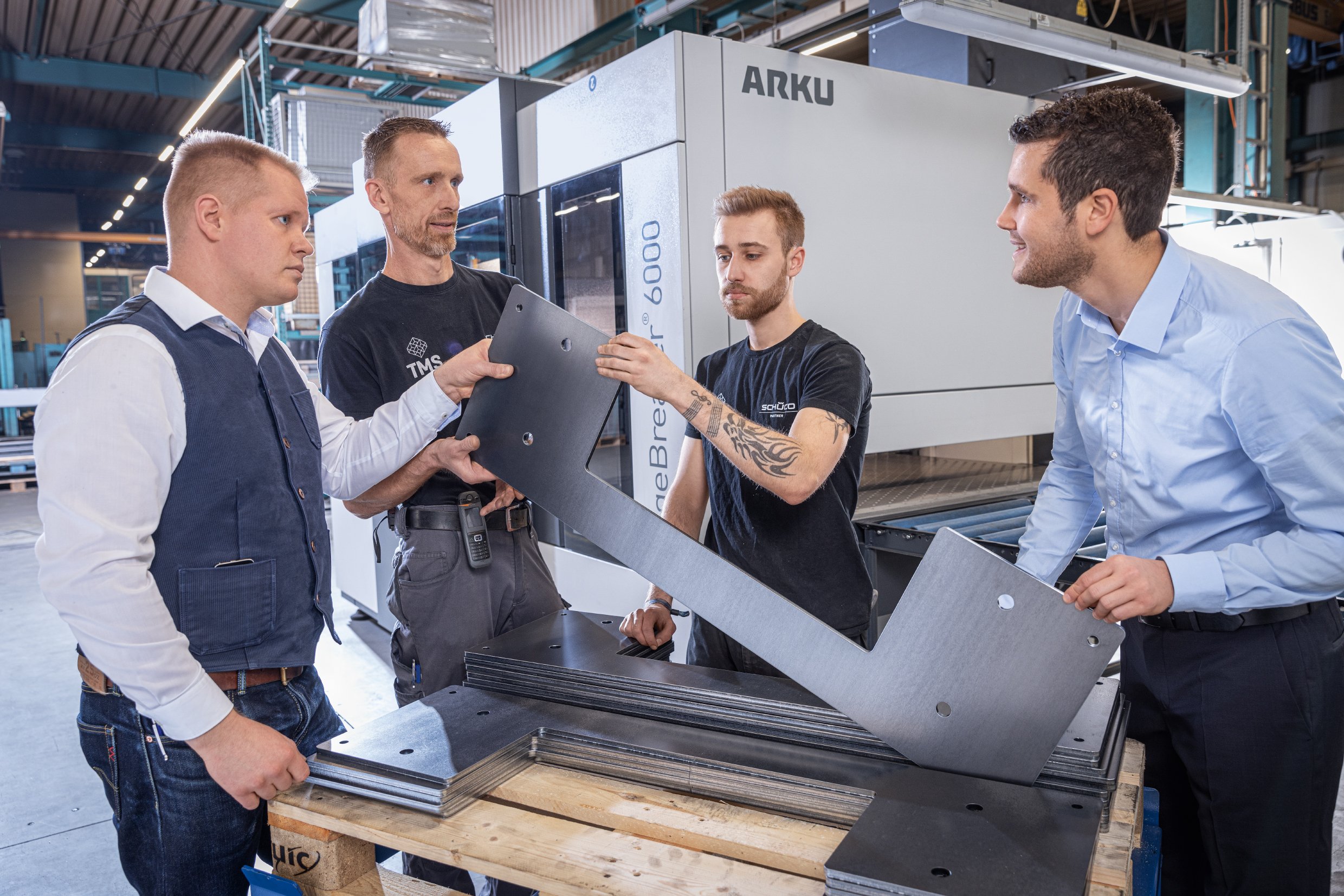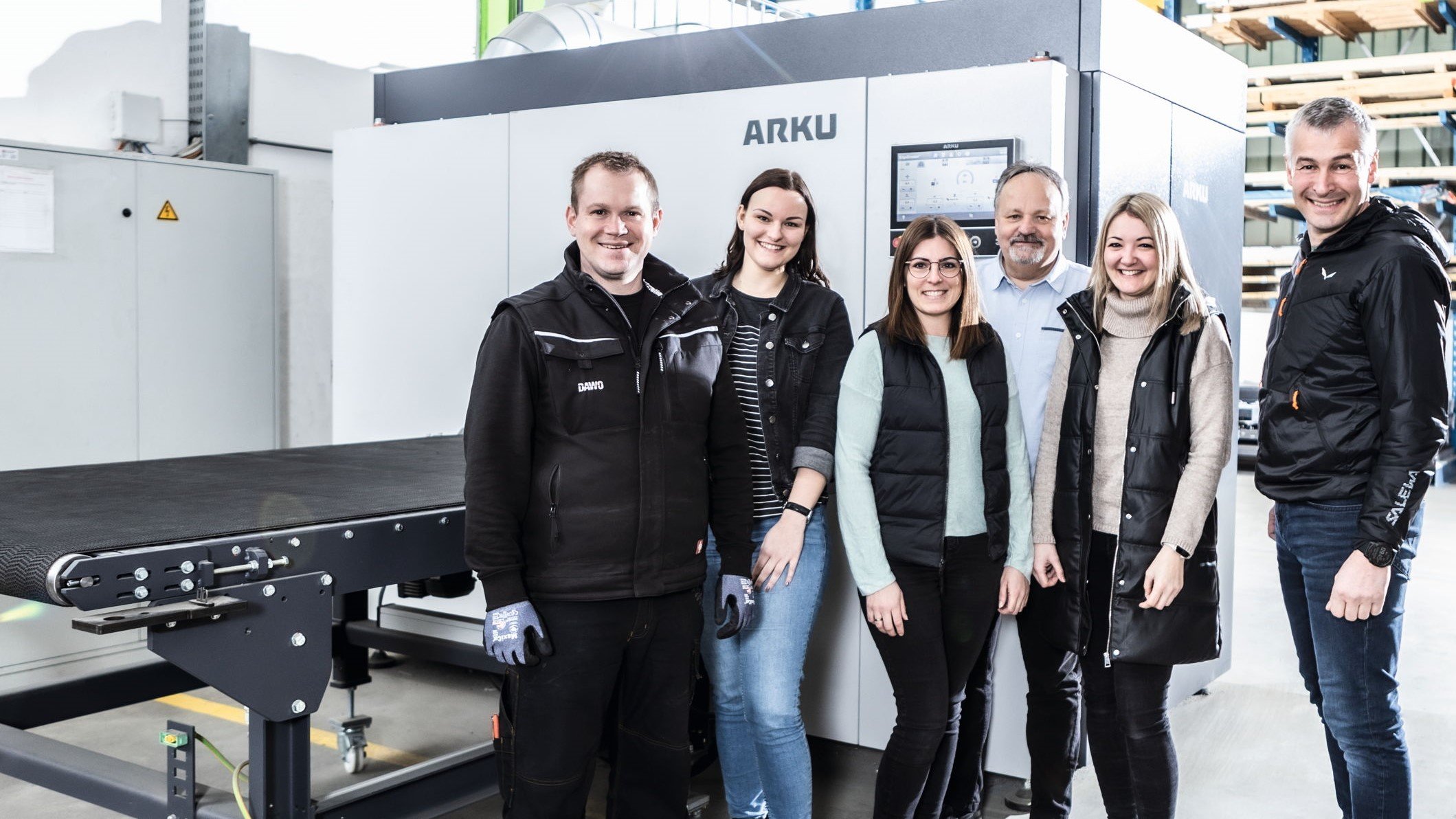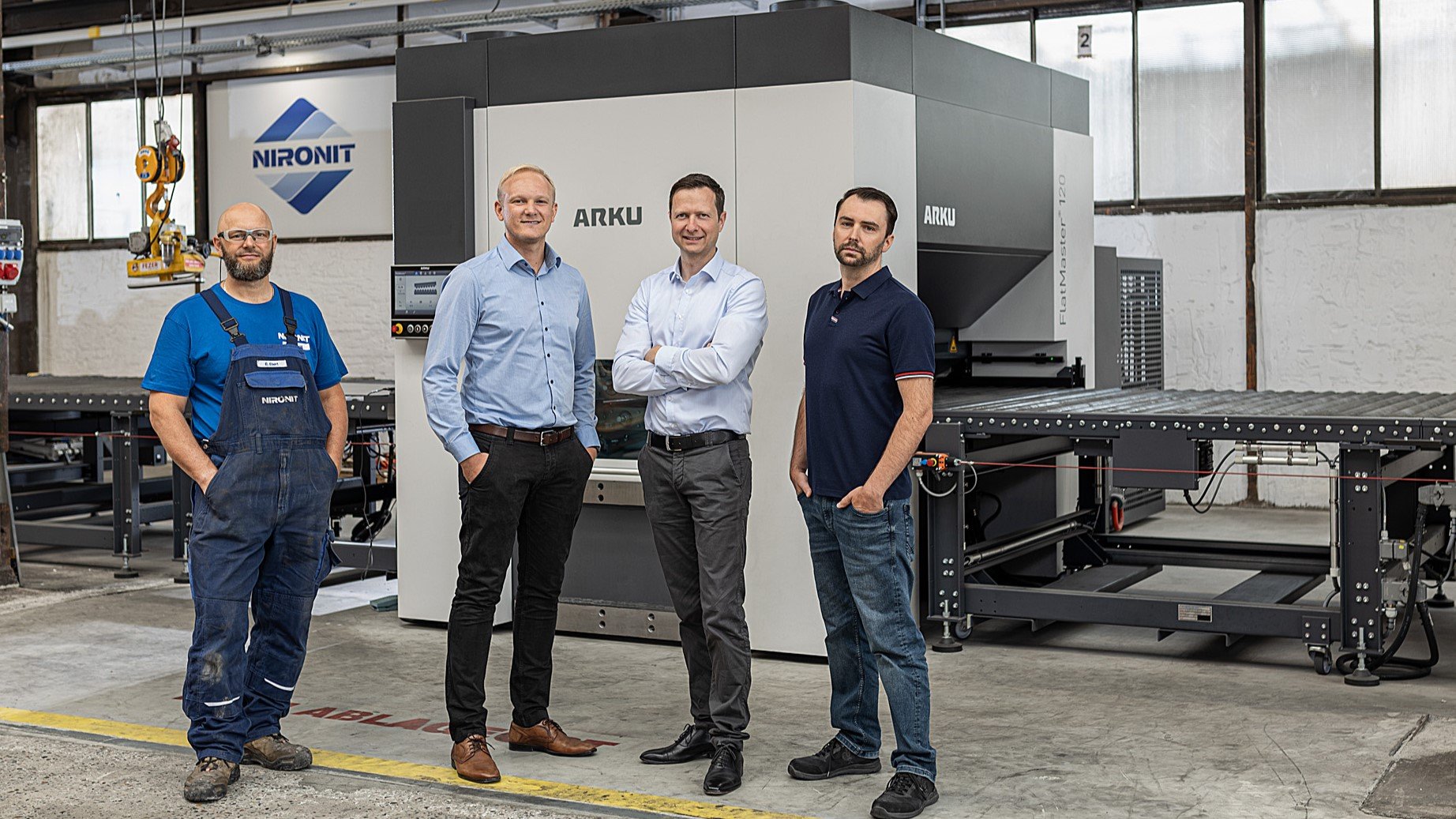Deburring machine improves position in the market
The second generation is already actively managing the TMS Metall- und Stahlbau S.A., or TMS for short. Founded in 1991, the family business offers its services in two divisions. For architecture, the company offers light metal and facade elements, structural steel engineering or fire protection elements. For mechanical engineering, the Luxembourg-based company produces special parts or industrial parts in series. "In the architecture sector, our unique selling point is that we cover the entire value chain from planning and consulting to manufacturing and assembly," says member of the management board, Angela Weyer. Anyone wandering through the streets of Luxembourg can see some of the results of TMS's work. Examples can be found at the National Stadium or the National Library. "For the production of sheet metal facades, the architectural business unit benefits from our second business unit, mechanical engineering. This allows us to fully implement our technical know-how," adds Jürgen Decker, also Managing Director. According to Weyer, the processing spectrum in the mechanical engineering industry is very broad: TMS supplies the construction machinery industry as well as mechanical engineering, the electrical industry and medical technology. The company is also active in sustainable sectors, as demonstrated by orders from solar energy and, the infrastructure of mobility projects. "We attach importance to a diverse customer structure, because dependencies bring a risk with them," explains Mark Weyer. In order to serve such diverse customers, the company works in an agile and flexible manner. In addition, TMS has the right machinery for the requirements at its two sites in Grevenmacher, Luxembourg, and Konz, Rhineland-Palatinate. But even more important are the almost 200 employees: "To be able to deliver the quality, we only work with skilled workers," emphasizes Angela Weyer.




Medical technology is a pioneer for deburred sheets
Especially from the medical technology sector, customers wanted more and more deburred sheets. In this area, the quality requirements are always changing. "There are two reasons for this," says Plant Manager Johannes Hemmer. One was handling, because employees can injure themselves on sheets that are not deburred and have sharp edges. Second, the medical equipment is regularly disinfected, and the cleaning cloths lose fibers on remaining burrs. These fibers are in turn a breeding ground for germs.
TMS previously used an old wet deburring machine for deburring. This could only meet the requirements to a limited extent and left water spots on the workpieces. Therefore, in 2020, the managers decided to look for a new machine. When they were almost done sifting through the available offerings, they came across the EdgeBreaker® 6000. "ARKU Maschinenbau designed this system specifically for the complete processing after punching and laser cutting," explains Stefan Sauter from ARKU Sales. In just a single pass, the machine can deburr, round the edges and apply a surface finish.
The core of this deburring machine is a rotor equipped with rotary brushes. The advantage: The sheet edges are rounded more evenly than with any other deburring machine. This is because the brushes always hit the sheet metal from different directions. "This means they remove the material very evenly, both on the inner and outer contours of the workpiece. Even a radii of up to 2.0 mm is possible," reports Sauter. The rotor with the brushes is supplemented by a sanding belt for deburring and an optional fleece for surface finishing.
As soon as the EdgeBreaker® 6000 was available, things moved quickly at TMS. "The results of the sample parts were very satisfactory and the contact was also very good," Hemmer recounts. "We ordered the machine in March 2021 and configured it to our own requirements." At the beginning of September, the system was delivered on time and integrated without any problems.
"The EdgeBreaker® is now much more central than the old deburring machine. It is now directly in the material flow immediately after cutting. It underlines how the topic of deburring is becoming more central," says the Plant Manager. At the same time, ARKU has accommodated its customer TMS. "The surface finish is less relevant for us, so we left out the third unit. This has saved costs and we still have a full-fledged machine that can do its job," reports Hemmer.


A wide range of parts for the deburring machine
In the meantime, other areas are also benefiting from edge rounding. The range of parts is then correspondingly diverse. In upstream cutting, TMS has two flatbed lasers, a punching/laser machine combo, two punching machines and a waterjet cutting system. "Across this spectrum, we can deburr the parts with the EdgeBreaker® and then bend and weld them. In some cases, they also go directly to coating after deburring," says Hemmer.
Since the workpieces at TMS have their own special features, handling them on the deburring machine requires some know-how and experience. Some of the formats are quite large, up to 1 m x 2 m. At the same time, there are also thin stainless steel sheets with a thickness of 0.6 to 1 mm.
EdgeBreaker® 6000 processes surprisingly thin parts
This is why the management sees a particular advantage in the EdgeBreaker® 6000: "It can also be used to reliably process sensitive sheet metal that is only 0.6 mm thick." To be sure, TMS had corresponding sample parts processed at ARKU in advance - with optimal results. "If the 0.6 mm sheets do not have any unusual curvature, they are also processed correctly," adds Hemmer.
Compared to working with the wet deburring machine, the plus points of the EdgeBreaker® really becomes evident. Not only that the maximum width has increased from 980 to 1300 mm. "Wet deburring is problematic for normal steel parts because rust occurs. We therefore only processed stainless steel and aluminum on the old system," explains Hemmer. But operation is also much easier: ARKU offers a touchscreen with easily understandable graphics. "This is especially a relief for our foreign-language employees, since Luxembourg is a country of multilingualism," says Angela Weyer.
The viewing window also helps. "For other customers, this may be a gimmick, but for us it offers an immense advantage with the EdgeBreaker® 6000: We can see whether the parts remain on the vacuum belt and can make fine adjustments to the grinding belt. With the old machine, you only noticed when a part went flying when it no longer came out of the machine," says the Plant Manager.

Maintenance is no longer a torment
Above all, the maintenance effort for the wet deburring machine was immense. "The mixture of grinding dust and water was almost concrete-like after it dried," Hemmer reports. They also had to disassemble the old deburring system to clean it and hose down parts with a high-pressure washer in the yard. "Now all we have to do is open the door, drain the water every other day for the wet extraction and vacuum the inside with an industrial vacuum. Overall, it's a much cleaner and easier job," Hemmer says.
In the meantime, the EdgeBreaker® has found its permanent place at TMS. "We processed around 84,000 individual sheets with it in 2022," says Hemmer. This underscores the trend that more and more customers want their sheets and sheet metal parts deburred. "We've definitely been able to keep customers where the critical process was deburring. The moment we determined we were going to buy a new machine, the customers were happy," says the Operations Manager. Internally, TMS has become much more confident in its deburred sheet requirements. "In the past, the customer would request deburring, and we would try to keep the issue small. Now deburring is actively offered as well, which has improved our position in the market," he explains. Decker also adds, "With the EdgeBreaker® 6000, we have increased process stability and product quality. This has increased overall customer satisfaction."



